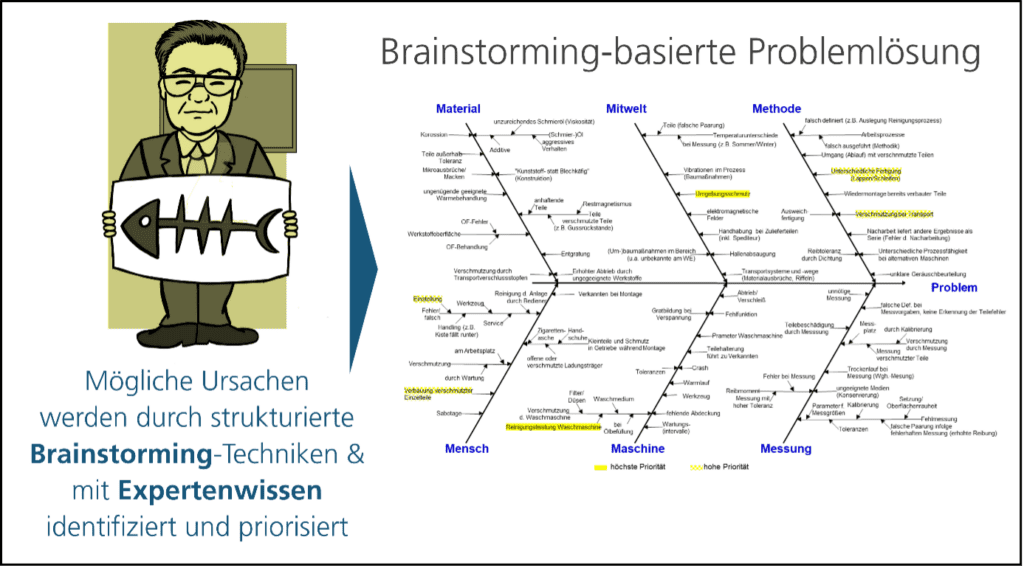What are the pitfalls of solving complex technical problems?
Part 1 from 2

In our two-part article, we will go into typical pitfalls and show you how to find the causes of various technical problems as quickly as possible with the help of logic & contrasts!
Not infrequently, the complexity of a problem to be solved is underestimated in practice ...and the path to the solution is more like a lurching course in a labyrinth than a straightforward path.
The more challenging the problem, the more protracted and costly the search for the "true" cause can be... and under time pressure, even a reasonably orderly search often turns into a poker game.
Does "the" cause exist at all?
Already 2,400 years ago Aristotle recognized that already a simple 'why-question' allows 4 plausible answer possibilities ...and consequently 4 causes are to be distinguished:
- Cause of substance: What did it originate from?
- Cause of movement: How does the change occur?
- Shape cause: what shape/structure did it create?
- Cause of purpose: What is it aimed at?
So if a problem solver today gullibly asks '5x why', then the 'first why' already leads to at least 4 correct answer options...assumptions and misconceptions are not included here!
In addition, there is the not uncommon case that several causes are involved in the problem ...and the problem has several partial manifestations.
Welcome to the labyrinth of hypotheses, influences, causalities & interactions!

How to avoid unnecessary detours in the search for causes?
The way practiced in the vast majority of all companies is to first systematically list probable & conceivable causes - typically this is done with the help of fishbone - or Ishikawa diagrams, cause-effect tables or fault trees.
Based on a number of hypotheses, the actual cause is then isolated.

If one or more experts involved (discover) the true cause, this path can soon lead to the goal. However, the more complex and novel the problem, the more often we observe the following:
- The true cause is found only after several initially prioritized causes are subsequently found to be wrong.
- The real cause is overlooked by the experts and, if it does come to light, it is more by chance... for example, after carrying out data analyses that surprisingly indicate that the cause is to be found in a completely different place.
The dilemma associated with the "brainstorming approach" is essentially that, on the one hand, a comprehensive and systematic development of possible causes appears necessary. The intention, which is perfectly understandable, is to Risk of overlooking the true causeby examining all options as far as possible and "every stone turned". On the other hand, the Effort to find the real causeThe more possible causes are investigated that could later turn out to be aberrations, the more dramatic the consequences.
How to find out the main cause of a problem in a direct way?
At second part In this article we show you methodical ways out of this dilemma. You will learn how you can completely dispense with the supposedly necessary intermediate step of 'listing suspected causes' in the future and take a straightforward path to find the true cause much faster & easier!
We make complicated things simple and share our experiences - sharing is doing!

